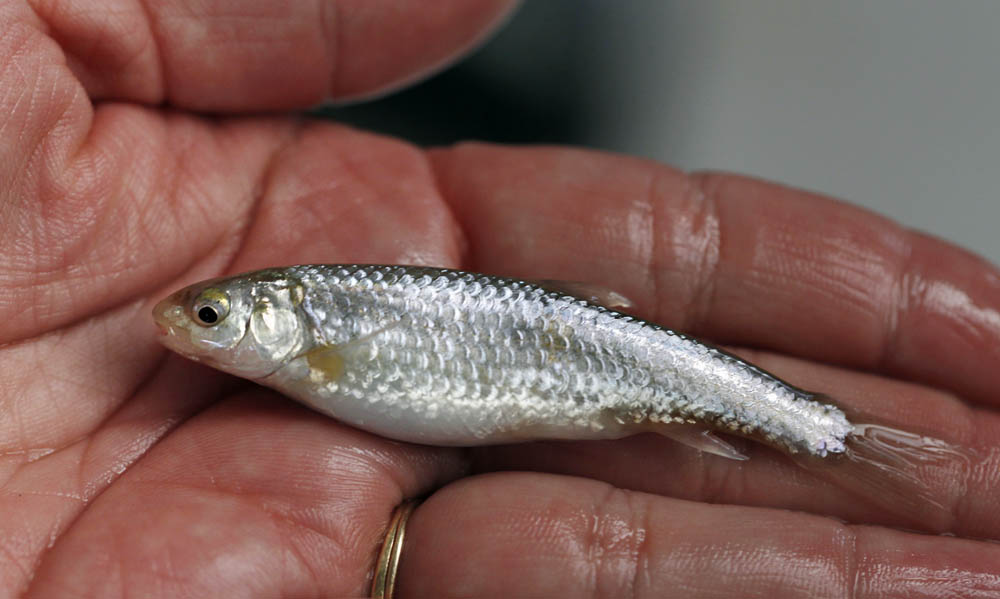by Colin McDonald | Feb. 11, 2015
The Rio Grande is disappearing. Demand for water is growing as snow packs shrink, rain patterns shift and average temperatures rise faster than they ever have in the past 11,000 years.
Read more
WildEarth Guardians, a conservation group, has filed intentions to sue against the states of Colorado and New Mexico, U.S. Fish and Wildlife Service and, most recently, the Middle Rio Grande Conservancy District. It has filed a lawsuit against the U.S Bureau of Reclamation and Army Corps of Engineers. The argument is that none of them are doing enough to ensure the health of the Rio Grande and the future of the endangered silvery minnow.
At the heart of each filing is the contention the current system of laws and regulations puts a priority on irrigating farmland and meeting the demand of cities and leaves too little water in the river.
Longer droughts and less snow pack are predicted for the future and demand is constantly growing. With that in mind, Jen Pelz, the Wild Rivers program director at WildEarth Guardians, argues better management is needed and water policy has to change if the Rio Grande is going to be a river for future generations.
“We are not going to be able to give all the water the MRGCD wants, all the water the city wants and all the water the species need,” she said. “The reality is we are not planning ahead.”
The fact that water for irrigation has priority is easy to see in New Mexico and Colorado. In Colorado more than 95 percent of the spring runoff can be taken out for irrigation. It was newsworthy when we paddled through that Colorado was allowing 20 percent of the river to cross the state line.
Here in New Mexico, the drainage ditches that run alongside the river easily carry 10 times more water than the ankle-deep water of the river. The big debate every morning is do we take the slow route and walk through the wet sand of the river or the fast one and paddle the drainage ditches.
In the history of water policy in the Western United States, the concept that some portion of the water in a river should be left to reach the sea is relatively new. Elephant Butte Dam was finished on the Rio Grande in 1916 and built so the irrigation districts could use every drop of water by the time it hit El Paso.
And as such, the silvery minnow has lost almost all its historical habitat from north of Cochiti Dam in Northern New Mexico to Boca Chica Beach on the Gulf Coast. Now the fish occupies between 5 percent and 10 percent of that on the reach between Cochiti and Elephant Butte.
The minnow defines what it means to be endangered. In 2013, the U.S. Fish and Wildlife Service found three fish living in the wild. In 2012 it found 0.
The only reason there are still fish is because thousands of hatchery-raised adults are released into the river each spring in the hopes that they will spawn and help re-establish a self-sustaining wild population. The resulting eggs are then gathered and taken back to the hatcheries to be raised for next year’s release.
On Wednesday, the MRGCD joined the list of agencies that could be sued by WildEarth when it received a letter from the nonprofit.
The district’s lawyer did not return phone calls. A press release was sent out in which CEO Subhas Shah accused WildEarth of having no knowledge of MRGCD’s operations or the work it has done to leave some water in the river. The release also said WildEarth had “disdain for irrigated agriculture in the middle Rio Grande Valley, as engaged in by the pueblos since time immemorial and by the non-pueblo members for the last 400 years.”
Shah concluded with “The MRGCD will present its factual, substantial and successful efforts toward water conservation and protection of Rio Grande silvery minnow to the Federal Court.”
Given the rate at which such cases move through the court system and the predictions for the current drought, the minnows better get used to living in hatcheries.
To comment on this post or ask a question, please visit the expedition's Facebook page.










While making his way to the Gulf of Mexico, Colin will be periodically activating a device that uses satellite technology to share his current location. Use this map to see where he traveled on this day.
| Check-In | Time of Check-In (CST) | Latitude | Longitude |
|---|---|---|---|
| #1 | 6:22 p.m. | 34.65137 | -106.7402 |
| #2 | 7:14 p.m. | 34.62923 | -106.75108 |
| #3 | 7:55 p.m. | 34.59571 | -106.74872 |
| #4 | 9:20 p.m. | 34.54524 | -106.76671 |
To report on and understand the haphazard irrigation system the Rio Grande has become and the changes it is going through, Colin decided the best approach would be to travel the length of the Rio Grande by foot and small boat.
He knew it would give him a unique perspective on a river that few understand. It did require many long days of moving slowly and camping on muddy riverbanks, but Colin likes that sort of thing.
The benefit was it provided access to people who wanted to share their stories and experiences with the Rio Grande. Via Facebook and chance encounters, Colin made instant friends who opened their homes. They provided help from loaning their trucks to their cell phone contact lists to help tell the story of the Rio Grande.
The trip would not have been possible without their help, along with the dedicated assistance of David Lozano, Jason Jones and Daniel Dibona, who drove thousands of miles to get people and boats in place.
Contributors